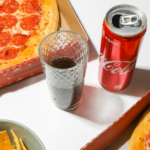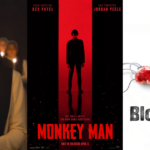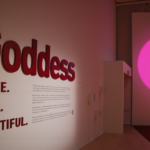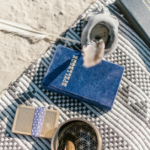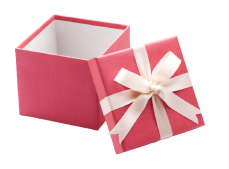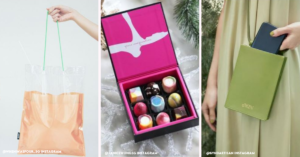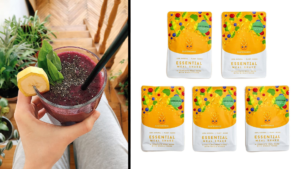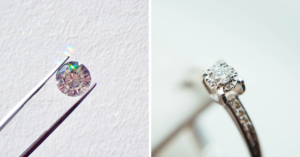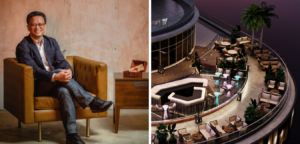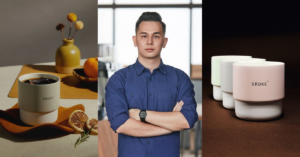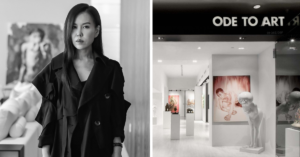With an abundance of new stylish items coming out in Singapore, it’s rare that we come across talented local designers. With jewellery and K-fashion brands, there’s something about local designers that piques our interest. Therefore, we were so excited when we heard of Levi’s partnership with Justin Chua. The collaboration between world denim pioneer and leader alongside the alumni of Lasalle College of the arts is truly memorable. With this, Glitz sat down with Justin as he talks about this project with Levi’s that’s making a difference.
Getting To Know Justin Chua
1. Can you introduce yourself to our readers?
I’m Justin Chua, a 25-year-old fashion designer based in Singapore. I emphasise balance between form and functionality within my designs. Most of my works tend to remove gender ideals, not conforming to the restrictions and boundaries set by society.
My inspirations mainly come from different architectural styles. Where structural forms and functionality intersect and translate these ideals through the details and craftsmanship of my designs.
2. When was the point you realised you wanted to be a fashion designer?
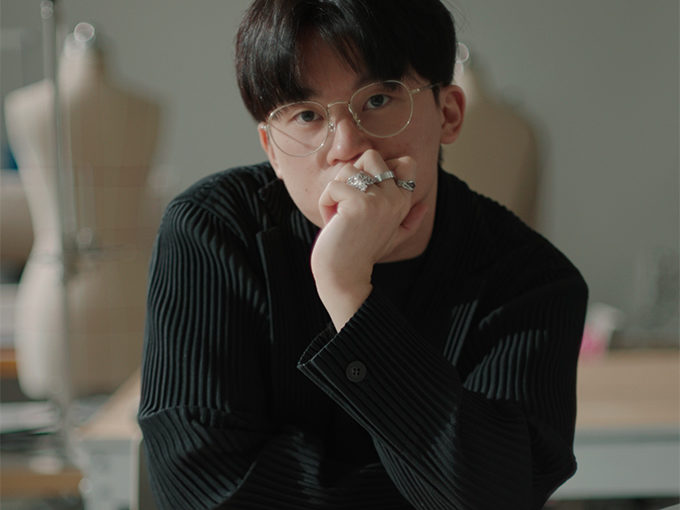
I always had an interest in footwear and sneaker design when I was growing up. It then slowly translated into clothes and fashion over the years as I grew older.
Pursuing fashion design was never something I envisioned for myself. But I told myself if I wanted to do something for long, it better be something that I truly enjoy. And that was working in a creative space with clothes.
3. What does “fashion” mean to you?
Fashion and dress have always been considered forms of identities and mediums of self-expression. With constant changes in the environment around us, I feel that the perception of fashion itself should also evolve in terms of how we can use them to address different issues surrounding us.
Working With Levi’s
4. Can you tell us the inspiration behind the piece you did in collaboration with Levi’s?
One of the key references and my initial inspiration for this collaboration was the Glass in Bloom exhibition that was held at Gardens by the Bay. They were these large floral-inspired glass sculptures by Dale Chihuly. I saw how repetitive layers in controlled randomness could result in something really interesting. So I wanted to incorporate that and the concept of flowers, usually seen as being softer, into something stiffer. Just like denim to show the versatility of the material itself in a different light.
5. What do you love most about the process of working with Levi’s?
The overall process and collaboration was fun and challenging for me. This is because it was my first time working with upcycled denim. The task was to create a dress made using deadstock garments from Levis, which are things that I don’t usually work with. So I saw this as an opportunity to grow as a fashion designer, expanding out of my comfort zone.
Denim is a very stiff material and it is usually used for every day or workwear. By using it to make a dress, the way the fabric sits and falls on the body might be different than what I imagined. As the materials are sourced from deadstock pieces, there was not as much flexibility in terms of the types of denim I could use for the dress.
Levis was accommodating in terms of how they tried their best to provide me with suitable denim jeans that fit the criteria I was looking for as I needed the overall look of the dress to still be cohesive even though it was made from upcycled pieces. The whole process of one idea leading to another which resulted in the final piece being the way it is and seeing it come together was the most enjoyable part for me.
Working with upcycled garments such as denim jeans to create something new alters the design process as you are not able to just start conceptualising ideas and executing them. There are certain considerations you have to work within terms of the existing dimensions of the garments you are given. As I did not have a clear idea of how the piece would look, I had to experiment with different ways of constructing the piece while keeping the dimensions of the existing upcycled garments in mind.
Another challenge I had was making sure the pattern pieces I drafted were able to fit the width of the denim that I was given as they were all existing pairs of Levi’s jeans. There was also the problem of sorting out the different shades of denim, making sure the colours I chose go well together. And since I did not have access to a laser cutting machine, I had to cut all the individual petal pieces by hand which took a lot of time.
All About Design 0307
7. Can you give us a detailed description of “0307”?
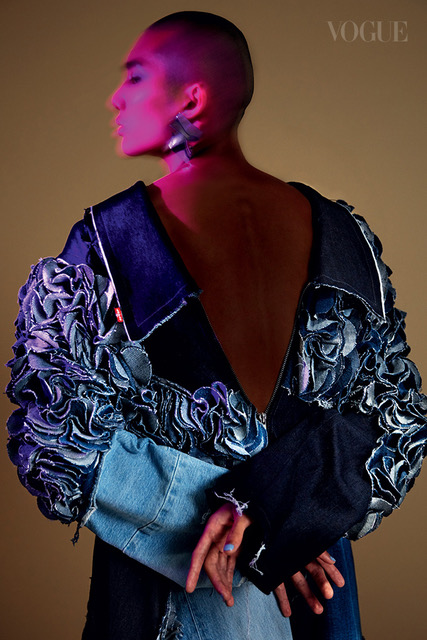
The final garment is a two-way piece that can be worn on both sides. Either as a dress or a coat. It has an A-line silhouette and contrasting panel details, finished with an irregular hem and a rolled collar. Individual hand-cut denim petals are stitched and placed on certain panels as accent details accompanying the raw edges and fraying found throughout the garment.
8. How can a person style the “0307”?
Anyone could wear this piece as long as the design resonates with them. I feel the piece itself can be worn by different people as it has a very gender-neutral silhouette.
I feel this piece could be worn to an event as a dress by itself as more of a statement piece. But it also could be styled more casually as a coat and layered with other pieces when you are out and about on the streets as it is versatile enough to dress both ways.
Takeaway And The Future
9. What was one thing you learned from this project with Levi’s?

Taking upcycled garments into consideration for my projects in the future would be one of the key takeaways for me. As I think the actual implementation of using upcycled garments requires you to dissect it into different panels, it already fits in with my design aesthetic of creating panelling details with different silhouettes. By incorporating upcycling into my polymorphic designs, it strengthens the conversation of sustainability and gives the old garments a new and longer lifespan.
I feel this project also has allowed me to touch upon upcycling by working with denim but in future designs I could explore upcycling more as a whole by working with other existing garments and deadstock materials as well to consider more possibilities in my polymorphic designs.
10. Where do you see yourself in the next 5 years?
Ideally, I will still be working in the fashion industry here in Singapore as a fashion designer under a label. Hopefully, I will also be starting my own label as well when I feel I have gained enough experience in the industry or when the time and opportunity comes.
Did you like this article? Then make sure to follow us on Facebook and Instagram for more lifestyle-related information.


